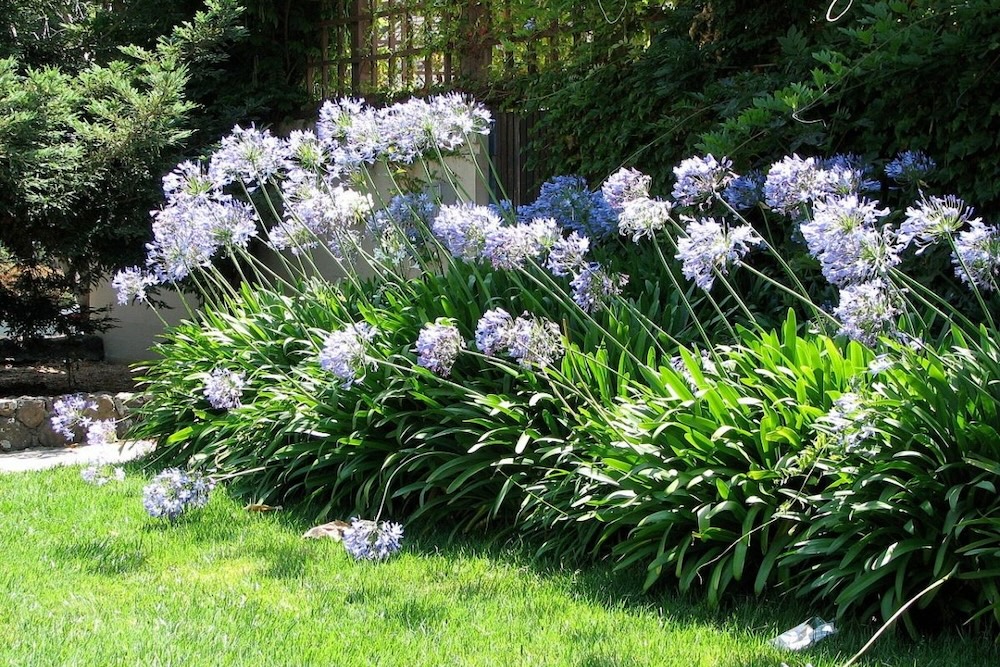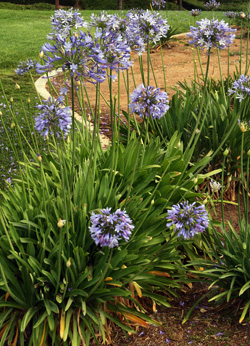Letting Loose the Secret to Effective Agapanthus Cultivation: Tips and Techniques for a Flourishing Yard
In the realm of horticulture, cultivating agapanthus efficiently requires a tactical technique that includes various facets of plant care. With cautious attention to information, one can unlock the keys to nurturing these magnificent blooms, leading to a garden that prospers with charm and vibrancy. By recognizing the nuances of agapanthus cultivation, one can develop a setting where these plants flourish and flower generously. In the complying with discussion, we will certainly check out vital suggestions and methods that will certainly assist you towards a prospering agapanthus garden, supplying understandings right into finest methods, soil conditions, sprinkling techniques, and much more.
Growing Agapanthus: Best Practices
When planting Agapanthus, correct dirt prep work is important for making sure effective development and development of these attractive blossoms. Agapanthus, generally known as Lily of the Nile or African lily, grows in well-draining soil with a slightly acidic to neutral pH degree - Agapanthus. Before planting, it is crucial to change hefty clay soils with raw material such as compost or peat moss to improve drain and offer necessary nutrients for the plants
To grow Agapanthus, choose a place that obtains complete sunshine to partial shade, as this will certainly promote healthy development and abundant flowering. Dig a hole two times the diameter of the plant's root round and place the Agapanthus at the exact same deepness it was previously growing. Delicately backfill the opening with dirt, pushing down securely to remove any air pockets around the origins.
Water the recently grown Agapanthus completely and remain to keep the soil uniformly wet, specifically during the plant's energetic expanding period. Agapanthus. Applying a balanced fertilizer once a month can additionally sustain the plant's development and flowering. By adhering to these ideal methods for planting Agapanthus, you can produce a stunning screen of these fascinating blossoms in your garden
Perfect Soil Issues for Agapanthus
For ideal development and flowering success of Agapanthus plants, guaranteeing the dirt problems are excellent is important. Agapanthus likes soil that is rich in nutrients, so incorporating a balanced plant food during the expanding season can advertise healthy development and vivid blossoms.

Watering and Feeding Tips
To make certain healthy and balanced development and vivid flowers, correct watering and fertilizing techniques are necessary for successful Agapanthus farming. Agapanthus plants gain from regular watering, especially during the growing period. It is recommended to water deeply once a week, ensuring the dirt is damp but not soaked. Throughout heat or in pots, even more frequent useful content watering might be required to stop the soil from drying out entirely.
When it pertains to fertilizing Agapanthus, a balanced fertilizer with equal components nitrogen, phosphorus, and potassium can be used in the spring to promote healthy and balanced growth and flowering. Slow-release plant foods are optimal for supplying nutrients gradually over an extended period. Avoid over-fertilizing, as this can bring about excessive vegetation growth at the expenditure of blossoms.
Additionally, incorporating raw material like compost right into the soil can enhance nutrient levels and boost soil framework, helping in the general health of the Agapanthus plants. By adhering to these watering and feeding tips, garden enthusiasts can ensure their Agapanthus plants grow and create stunning screens of flowers.
Pruning and Deadheading Strategies
Proper trimming and deadheading methods play an essential function in maintaining the health and wellness and aesthetic appeals of Agapanthus plants, complementing the necessary practices of watering and fertilizing for effective cultivation. Pruning Agapanthus includes getting rid of spent flower heads, More about the author dead or yellowing fallen leaves, and overall shaping of the plant to advertise far better growth. Deadheading, the procedure of getting rid of discolored flowers, not only enhances the plant's look but likewise encourages additional growing.
When deadheading Agapanthus, it is advisable to clip off the blossom stem at the base utilizing sharp, tidy shears. This procedure redirects the plant's energy from seed manufacturing back right into origin and foliage growth, advertising a healthier and extra robust plant. Regular deadheading can expand the flowering duration of Agapanthus and protect against self-seeding, which can lead to overcrowding.
In our website regards to trimming, Agapanthus typically benefits from a light trim after blossoming to clean up the plant and urge fresh development. Cutting back the spent blossom stems and getting rid of any kind of dead or broken vegetation aids preserve the plant's vitality and general look. However, it is vital to stay clear of cutting into the crown of the plant, as this can weaken its health and wellness.

Protecting Agapanthus From Vermins and Diseases
Executing efficient pest and illness administration approaches is important to guarding the health and wellness and vigor of Agapanthus plants in growing. One usual pest that impacts Agapanthus is the Agapanthus borer, a caterpillar that passages right into the plant, causing damages to the fallen leaves and blossoms.
In enhancement to bugs, Agapanthus are at risk to conditions such as origin rot and fungal fallen leave areas. By staying alert and resolving parasite and condition issues promptly, garden enthusiasts can aid their Agapanthus prosper and grow.

Verdict
Finally, effective farming of agapanthus requires correct planting methods, ideal dirt problems, sufficient watering and fertilizing, routine trimming and deadheading, and defense from illness and pests. By complying with these pointers and methods, garden enthusiasts can make sure a flourishing garden full of beautiful agapanthus flowers. Agapanthus. Bear in mind to keep constant care and interest to information to promote the health and wellness and long life of these magnificent plants
When planting Agapanthus, proper soil preparation is necessary for ensuring successful growth and advancement of these stunning blossoms.Water the recently planted Agapanthus completely and continue to keep the soil uniformly moist, especially during the plant's energetic expanding season.For ideal development and growing success of Agapanthus plants, ensuring the dirt problems are excellent is crucial. When growing or hair transplanting Agapanthus, make sure the soil is well-prepared to supply the required foundation for the plants to develop themselves effectively. One usual bug that impacts Agapanthus is the Agapanthus borer, a caterpillar that tunnels right into the plant, triggering damages to the flowers and fallen leaves.